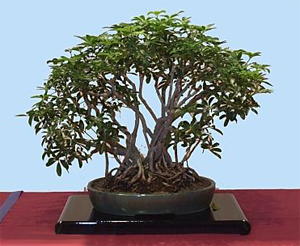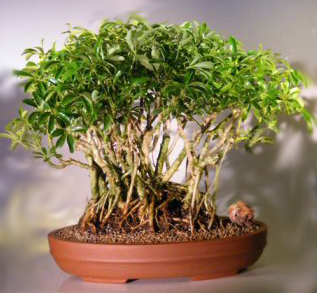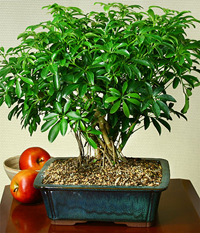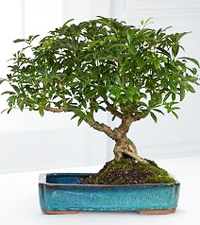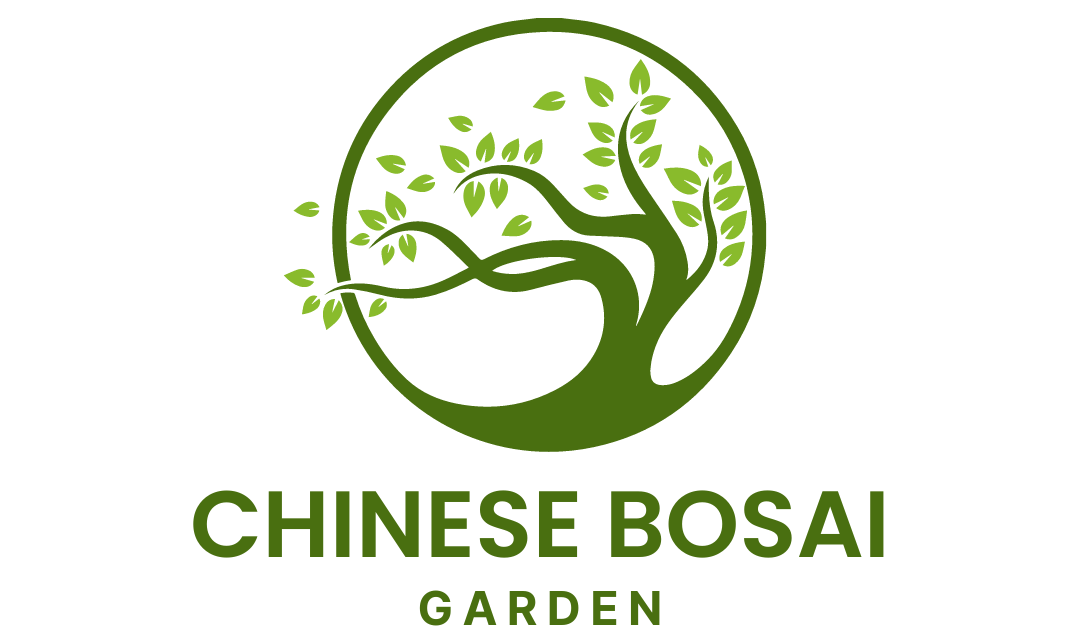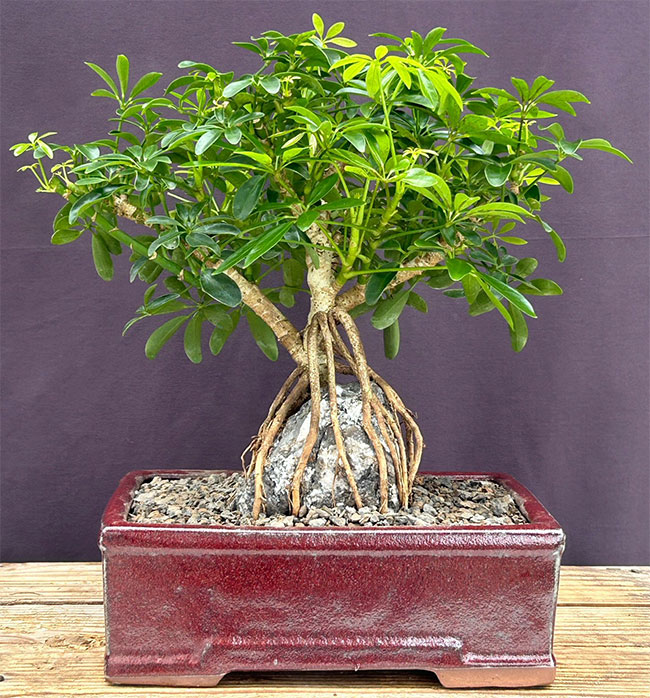
The Hawaiian Umbrella Bonsai Tree, also known as Schefflera arboricola, is one of the easiest bonsai to grow and maintain, which makes it perfect for beginners.
It can be easily trained into a bonsai since in nature it is a small shrub with dense canopy.
This evergreen is one of the most popular bonsai trees. You can grow it inside or outside as long as it doesn’t get too much sun or too cold.
The Hawaiian Umbrella Bonsai Tree has interesting aerial banyan roots making it ideal for roots-over-rock styles. Miniature umbrella-shaped leaves and multiple trunks give this bonsai a tropical feel.
Additional Information
Botanical name: Schefflera arboricola
Family: Araliaceae
Common Names: The Hawaiian Umbrella Tree is also known as the Dwarf Umbrella Plant, Arboricola Tree, or Hawaiian Elf.
Origin: It is native to Taiwan and Hainan.
Appearance: It has thick green miniature leaves shaped like umbrellas that form a lush, green canopy, thus the name “Hawaiian Umbrella”. It has multiple trunks that are closely grouped together. This is one of the reasons the Hawaiian Umbrella Bonsai Tree is often used in forest plantings.
Flowering: It produces pretty red flowers in late winter and early spring.
Outdoor/Indoor Use: Both. If you live in the tropical climate you can grow Hawaiian Umbrella Bonsai Tree outside. Because it grows well in low light conditions, you can grow it indoors at home or in the office.
It does prefer natural light over fluorescent lighting, so try to keep it in a location near the window with indirect sunlight.
Light Requirements: Hawaiian Umbrella Bonsai does well in the shade or partial shade making it a great bonsai for indoors. It prefers natural light but does well in the low light indoor environment.
When moving the Hawaiian Umbrella Bonsai indoors, give it some time to acclimatize. Don’t worry if it starts shedding leaves.
Water Requirements: Incorrect watering is one of the main reasons why beginners end up killing their bonsai. Hawaiian Umbrella Bonsai Tree needs to be watered every 2-3 days. Don’t allow the soil to dry out completely. Try to keep it moist but well-drained. Because it is a tropical plant, it likes high humidity.
Occasional misting will make it happy especially if you are growing it indoors where the air is dry. If you notice that leaves are starting to turn black, this is a sign of over-watering. If the tips of the leaves are turning up, that means it is not getting enough water.
Pruning/Training: Unlike other bonsai trees, Hawaiian Umbrella Bonsai doesn’t require any special training or pinching. To keep the miniature shape of the tree you need to provide it with occasional pruning. Avoid trimming all the new growth at one time. It doesn’t require any wiring as part of its training.
Bonsai Style: This bonsai is hard to train in any other form than freestyle or informal upright style. It has a broad crown that doesn’t work in a lot of traditional Japanese forms.
This bonsai has interesting aerial banyan roots that grow down towards the ground from lower branches. Using these roots, you can easily train this bonsai into roots over rock style.
Aerial roots are roots that grow above the ground. Some plants have roots that grow down towards the ground, others have roots that grow up and away from the ground.
Fertilizing: This slow-growing bonsai tree should be fertilized with good quality fertilizer during spring. It is not very picky.
Repotting: You should report it every year in early spring. Good quality soil is the key to the healthy growth of the bonsai. Soil breaks down over time and doesn’t absorb water that well. Fresh soil will bring more water and air to the roots of the bonsai tree.
Hardiness: Hawaiian Umbrella Bonsai is hardy and adaptable to changing weather conditions. It does best in USDA zones 9-11.
Insects and Diseases: Spider mites and scale.
Propagation: You can propagate it through cuttings, seeds, or air-layering.
Buy Hawaiian Umbrella Bonsai Tree »
